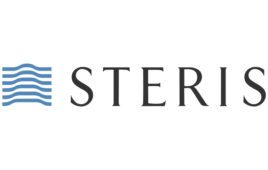UDI labeling can identify medical devices through their distribution and use. The deadline for labeling Class 1 and unclassified devices is coming up.
Tim Kearns, Videojet Technologies

A Videojet Wolke m610 oem thermal inkjet printer [Image courtesy of Videojet]
UDI paves the way for traceability
To improve medical device traceability, the FDA established the UDI system and implemented it in phases, beginning in 2014. While the agency delayed UDI compliance for Class I and unclassified devices until September 2022, full compliance for medical devices in Class II and III and implantable life-supporting and life-sustaining devices is currently required.
The UDI system requires labeling medical devices with a unique device identifier in both a human-readable (plain-text) form and a machine-readable form that uses automatic identification and data capture (AIDC) technology. These identifiers must appear on labels and packaging, and sometimes on the devices themselves.

Human and machine-readable codes produced by (clockwise from upper left) a thermal inkjet printer, a thermal transfer overprinter (TTO) and a UV laser [Image courtesy of Videojet]
- Device identifier (DI), a mandatory, fixed portion that identifies the labeler and the specific device version or model.
- Production identifier (PI), a conditional, variable portion that identifies one or more of the following for each specific device:
- Lot or batch number;
- Serial number in YYYY-MM-DD format;
- Expiration date in YYYY-MM-DD format;
- Date manufactured in YYYY-MM-DD format;
- Distinct identification code required by §1271.290(c) for a human cell, tissue or cellular and tissue-based product (HCT/P) regulated as a device.
Laser marking systems are commonly used to print and mark directly on medical devices due to their ability to produce permanent codes on many hard plastics, glass and metal. The optimal printing and marking technology for a given application depends on factors including the packaging substrate, equipment integration, production speeds and code requirements.
How UDI can work with Tyvek
Let’s take a closer look at a prevalent packaging choice for medical devices: DuPont Tyvek and similar medical papers.
Tyvek is made of very fine and continuous filaments of virgin high-density polyethylene (HDPE. It’s a popular medical device packaging material because of its tear resistance, durability, breathability, microbial barrier properties and compatibility with sterilization methods. Various Tyvek styles meet medical packaging performance requirements for mechanical strength and protection, with the material forming pouches, bags and form-fill-seal lids.
Because of Tyvek’s texture and unique properties, choosing a technology to print UDI codes on it requires careful consideration. Depending on the line setup, speed requirements and the type of Tyvek selected, three distinct printing and marking technologies can provide durable human- and machine-readable UDI-compliant codes.
Thermal inkjet is a non-contact printing technology that enables high-speed, high-resolution printing on Tyvek 1073B, 1059B, 2Fs and 40L with certain solvent-based and water-based inks. The printer cartridge’s multiple nozzles propel ink drops to produce the high-resolution codes.
Multiple thermal inkjet printheads can be mounted on the web of thermoformers and positioned to print codes on a lidding web before heat sealing. The printheads traverse the web, coding multiple packages in a single pass while matching the index rate. These systems support job information from an external database and from a hand-held bar code scanner.
With TTO technology, a digitally controlled printhead precisely melts ink from a ribbon directly onto Tyvek to print high-resolution codes and alphanumeric text. A manufacturer can integrate TTO printers on intermittent- or continuous-motion flexible packaging lines and ultrafast horizontal form-fill-seal equipment. Certain ribbons made with a blend of wax and resin provide excellent adhesion, contrast, and light resistance on Tyvek 1059B, 2Fs and 40L.
UV lasers work by focusing and steering a beam of UV light with a series of small mirrors to generate permanent, high-contrast marks, providing excellent marks on Tyvek 2Fs. The laser’s UV wavelength creates a color change through a photochemical reaction on the material without damaging it. This laser technology doesn’t require supplies like inks or ribbons.
Your operation’s throughput, utilization, investment and operating costs are all considerations when selecting a printing or marking technology to help meet UDI code requirements. Temperature and humidity can also affect a printer or laser’s performance, so you should test your packaging and products in relation to your environment to help determine the best solution.
Whether selecting thermal inkjet, thermal transfer, or UV laser technology, an experienced coding solution provider can guide you to the optimal technology for UDI coding on Tyvek packaging. They can also identify and implement complex data management software to help you meet the code and traceability demands of UDI.
Tim Kearns is sales manager for pharma and medical devices for Videojet Technologies.
The opinions expressed in this blog post are the author’s only and do not necessarily reflect those of Medical Design and Outsourcing or its employees.




